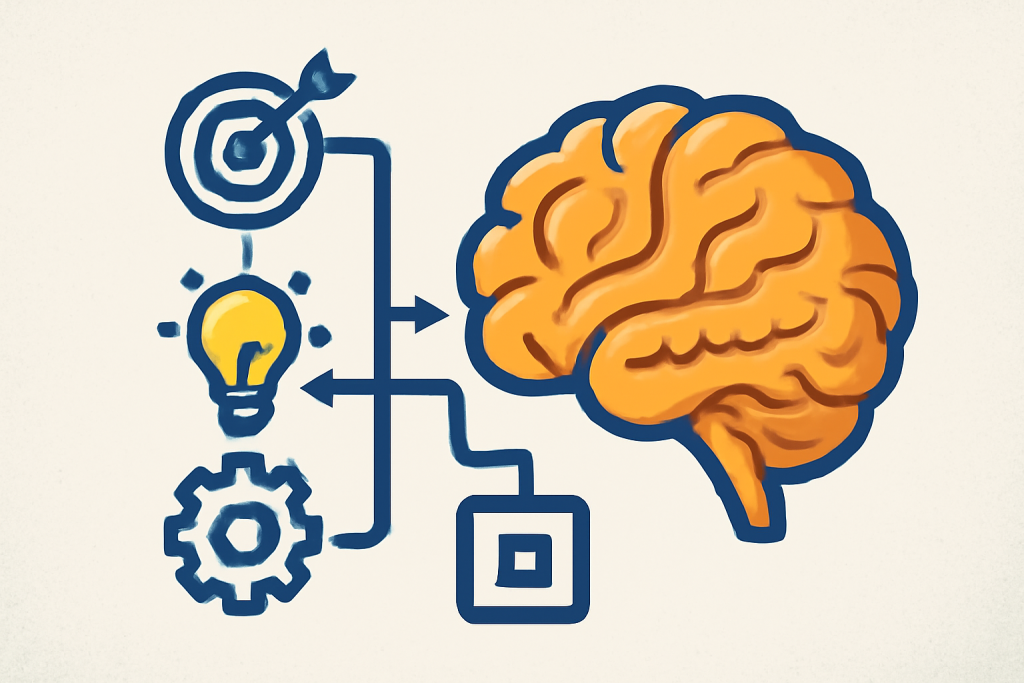In today’s fast-paced world, creative thinking is essential. However, there is a need for balance between creativity and structure. The idea of “anchors” can provide that balance. Anchors can guide expansive thinking by offering frameworks that allow ideas to flourish within a focused, strategic approach. Rather than being an obstacle, structure can fuel creativity, providing clarity, direction, and a path to achieving practical, innovative solutions.
Structured thinking does not limit the potential of expansive ideas. Instead, it ensures that creativity is organized, actionable, and aligned with larger goals. This is especially relevant in fields such as education, where students must learn to think critically and creatively, and in society, where innovative solutions are needed for complex issues. In this article, we explore how anchors can help guide expansive thinking, especially within education and societal contexts, and why structured thinking is key to meaningful progress.

What Are Anchors in Thought?
Anchors are mental frameworks that guide your thought processes. They can be tools, principles, or systematic models that help individuals organize, analyze, and act upon ideas. Think of anchors as the reference points that ensure thinking stays clear and focused, even while exploring expansive possibilities.
Without anchors, expansive thinking can easily become unfocused. For example, in brainstorming sessions, the tendency may be to throw out as many ideas as possible, leading to an overwhelming number of unorganized thoughts. While this can spark creativity, it often lacks the structure needed to develop actionable solutions. Anchors, like frameworks or systems, channel creative energy, allowing individuals to build on ideas systematically and evaluate them for relevance and feasibility.
Why Anchors Matter for Expansive Thinking
Creativity and expansive thinking require freedom, but they also need direction. Anchors provide that direction without stifling creative exploration. Structured thinking ensures that ideas don’t become disconnected or irrelevant while still encouraging innovation.
Here’s why anchors are so crucial for guiding expansive thinking:
1. Providing Structure for Creativity
Many people believe that creativity thrives in chaos, but structured thinking actually helps creativity flourish. Anchors allow individuals to focus their creative energy, ensuring ideas are developed logically and strategically. Frameworks like mind mapping or the design thinking process give shape to ideas, making it easier to assess and refine them.
2. Enabling Critical Thinking and Problem-Solving
Problem-solving often requires a systematic approach. Thought anchors, such as critical thinking models or SWOT analysis, provide structured methods to evaluate and break down complex issues. This allows for better problem identification, the generation of potential solutions, and, ultimately, more effective outcomes.
Structured thinking encourages individuals to approach challenges from multiple perspectives, allowing them to assess ideas critically before acting.
3. Maintaining Focus on Goals
It’s easy for expansive thinking to become overwhelming. Without structure, creative ideas can veer off course and lose their relevance. Anchors provide a reference point, helping individuals stay on track and focused on the desired outcome. Whether it’s a societal challenge or an academic project, having a clear framework ensures ideas align with broader goals.
4. Encouraging Purposeful Innovation
Innovation doesn’t require abandoning structure. In fact, having a structured approach to idea generation and evaluation enhances the ability to innovate meaningfully. For instance, agile methodologies or lean startup principles give entrepreneurs and innovators a framework for developing ideas in an organized manner. This structured process enables better decision-making, collaboration, and iteration, leading to practical and sustainable innovations.
Anchors in Education: Helping Students Think Expansively
In education, helping students think expansively requires a foundation of structured thinking. By teaching students how to organize their thoughts and ideas, educators can help them develop critical thinking, problem-solving skills, and creativity. Structured thinking frameworks guide students through complex concepts, ensuring that their ideas are coherent and relevant.
1. Bloom’s Taxonomy as a Thinking Anchor
Bloom’s Taxonomy is a well-known framework in education that helps students advance from simple knowledge recall to higher-order thinking, such as analysis, evaluation, and creation. This structured approach to learning encourages students to develop a deeper understanding of topics and think critically about the material they are engaging with.
By using Bloom’s Taxonomy, teachers can guide students from the basics to complex thinking, helping them organize their thoughts and build on foundational knowledge.
2. Project-Based Learning Using Structured Frameworks
Project-based learning (PBL) allows students to engage with real-world problems and collaborate to find solutions. However, without a guiding structure, such projects can become disorganized and ineffective. Tools like design thinking provide a structured approach to problem-solving, allowing students to ideate, prototype, and test solutions in a systematic way.
This ensures that students are thinking expansively while still following a clear, focused process.
3. Mind Mapping for Organized Idea Generation
Mind mapping is a popular technique used to organize and visualize ideas. It helps students see connections between concepts and organize thoughts in a structured format. By using mind maps, students can explore ideas freely while staying focused on the main objectives, making the thinking process more structured and clear.
Anchors in Society: Guiding Innovation and Social Change
On a societal level, anchors are critical for guiding collective thinking and addressing complex social challenges. Whether in public policy, innovation, or social change, structured thinking ensures that efforts remain aligned with long-term goals and have a measurable impact.
1. Policy Frameworks for Societal Progress
Governments often use structured thinking tools, such as cost-benefit analysis or stakeholder mapping, to develop policies that address social, economic, or environmental issues. These frameworks help decision-makers evaluate various options and choose the most effective path forward.
By using anchors like these, societies can create policies that are both innovative and grounded in real-world feasibility.
2. Systems Thinking for Holistic Solutions
Systems thinking is a structured approach that encourages individuals to consider the broader context and interconnections between various factors. This is particularly useful when addressing societal problems, such as healthcare reform or climate change. Systems thinking allows policymakers and activists to think expansively while ensuring that solutions are sustainable and comprehensive.
3. Guiding Social Movements with Anchors
Social movements often arise from a collective desire to change the status quo, but the path to success can be unclear. Anchors such as strategic frameworks or theory of change models help social movements stay focused on their goals, ensuring that actions are aligned with their larger vision. These frameworks provide direction and structure, helping movements create lasting change in society.
Implementing Anchors to Guide Expansive Thinking
To benefit from expansive thinking, individuals and organizations need to implement anchors effectively. Here’s how to use them:
-
Choose a Framework that Fits Your Goals: Select frameworks that align with your objectives. Whether it’s mind mapping for brainstorming or design thinking for problem-solving, having a framework ensures that ideas are organized and actionable.
-
Balance Flexibility with Structure: While anchors provide structure, allow room for flexibility. Creativity thrives within boundaries, but it’s essential to remain open to new ideas and approaches.
-
Regularly Evaluate Your Progress: Use anchors to assess whether your ideas are aligned with your original goals. Frameworks help measure progress, identify gaps, and ensure that ideas are evolving in the right direction.
-
Encourage Collaboration Using Common Anchors: When working with others, use a shared framework to guide the process. This ensures that all contributors are on the same page and working toward a common goal.
Conclusion
Anchors can guide expansive thinking by offering the necessary structure to ensure that creativity remains focused and actionable. Whether in education or society, structured thinking fosters innovation, problem-solving, and collaboration. By using thought systems and frameworks, we can navigate complexity, generate meaningful ideas, and create lasting change.
References
- Anderson, L. W., & Krathwohl, D. R. (2001). A Taxonomy for Learning, Teaching, and Assessing: A Revision of Bloom’s Taxonomy of Educational Objectives. Pearson. Available at: https://www.pearson.com/store/p/a-taxonomy-for-learning-teaching-and-assessing/P100000646431
- Brown, T. (2009). Change by Design: How Design Thinking Creates New Alternatives for Business and Society. HarperBusiness. Available at: https://www.harperbusiness.com/book/9780061766084/change-by-design/
- Meadows, D. H. (2008). Thinking in Systems: A Primer. Chelsea Green Publishing. Available at: https://www.chelseagreen.com/product/thinking-in-systems/









